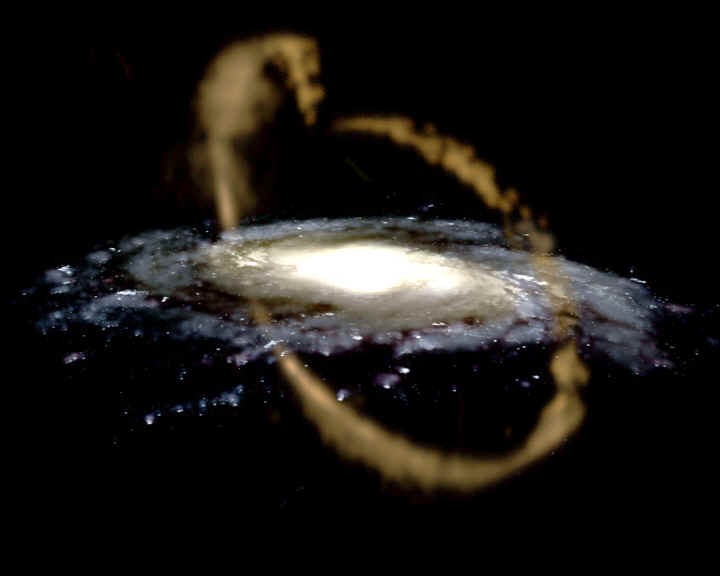You are here
Revealing the outer reaches of the Milky Way with LAMOST
An international team of researchers, led by Shanghai Astronomical Observatory, have uncovered a new technique for peering into the outer-most regions of our Galaxy.
Using data from the 4m Chinese LAMOST telescope, the team have developed a way of identifying certain types of star based on their colours. These colours are in the infra-red part of the spectrum, meaning that they are not visible to the human eye, but by using images from a space-based telescope (the WISE mission) they could categorise stars with remarkable accuracy. This classification has been developed by combining these infra-red colours with data from the LAMOST telescope. The LAMOST telescope, whose name stands for the Large Sky Area Multi-Object Fibre Spectroscopic Telescope, is carrying out a huge survey of stars in the Milky Way, classifying over one million stars each year. By combining the LAMOST classification with the infra-red colours from WISE, the authors realised that colours alone were enough to identify certain types of star.
The study focussed on one of the brightest types of star in the galaxy, called M-giant stars. These stars are nearing the ends of their lives, having exhausted much of the fuel in their cores, and have expanded to sizes up to 100 or 200 times that of our Sun. The fact that they are so large means that they are exceptionally bright. One of the brightest stars in the night sky, Gamma Crucis, is an M-giant. It is the closest giant star to the sun, at a distance of less than 100 light years. Gamma Crucis and three other bright stars form a cross in the night sky, and because of this Gamma Crucis is known in Chinese as the First Star of the Cross (十字架一).

Left: An illustration showing the Sagittarius dwarf galaxy being devoured by the Milky Way. This process leaves long tails of debris stretching around our entire galaxy.Artistic credit & copyright for left panel: David Martinez-Delgado (MPIA) & Gabriel Perez (IAC)
According to lead author Jing Li, a recently graduated PhD student from Shanghai Astronomical Observatory, “these stars are so bright that they are great for looking at the most distant parts of our Galaxy”. The team used a sample of M-giant stars to analyse debris from an accreted dwarf galaxy; large galaxies like our own are continuously swallowing smaller satellite galaxies, so-called dwarf galaxies. They focussed on the merger of the Sagittarius dwarf galaxy, which is still in the process of being devoured by the Milky Way. This process leaves long tails of debris stretching from the remaining core of the dwarf, and these tails encircle our entire galaxy. By analysing M-giant stars in the debris of this dwarf, Jing and her team were able to confirm the vast extent of these tails, showing that they reach out to the very edges of our galaxy. Jing added “we were even able to use the colours to study the chemical properties and ages of the stars, analysing how the dwarf galaxy has evolved over time.”
Co-author Martin C. Smith, Professor at Shanghai Astronomical Observatory, went on to say that “these bright stars are an extremely valuable resource, playing an important role in helping us understand the properties of our galaxy. As the LAMOST telescope continues to survey many millions of stars, M-giants are crucial to its success, revealing insights into the formation of the Milky Way which would otherwise remain hidden.”
Paper available from: http://dx.doi.org/10.3847/0004-637X/823/1/59 & http://arxiv.org/abs/1603.00262
